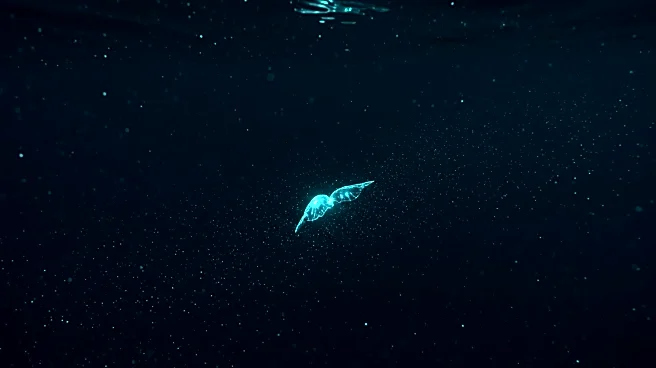Rapid Read • 7 min read
Researchers at the University of Colorado at Boulder have developed 'cyborg' jellyfish equipped with microelectronics to explore deep-sea environments. These biohybrid creatures are designed to gather data on ocean temperature, acidity, and other critical properties. The project aims to leverage the natural swimming capabilities of moon jellyfish, which can reach significant ocean depths, to monitor changes in marine ecosystems. The research team is also studying the biomechanics of jellyfish swimming and analyzing water flow patterns using biodegradable particles. This initiative is part of a broader field of creating biohybrid organisms, which has included experiments with cyborg insects for various applications.
AD
The development of cyborg jellyfish represents a significant advancement in marine research technology. By utilizing these biohybrid creatures, scientists can potentially reduce the costs and technical challenges associated with deep-sea exploration. This innovation is particularly crucial as climate change continues to alter ocean conditions, threatening marine biodiversity. The ability to monitor these changes more effectively could lead to better-informed conservation strategies and policies. Additionally, the project highlights the growing interest in biohybrid technology, which could have applications beyond marine research, such as in search-and-rescue operations.
The research team at the University of Colorado plans to continue refining the cyborg jellyfish technology, focusing on enhancing the data collection capabilities and understanding the swimming mechanics of jellyfish. Future developments may include expanding the range of environmental parameters that can be monitored and improving the durability of the microelectronics used. The success of this project could inspire similar initiatives in other fields, potentially leading to new applications for biohybrid organisms in various scientific and industrial sectors.
AD
More Stories You Might Enjoy










